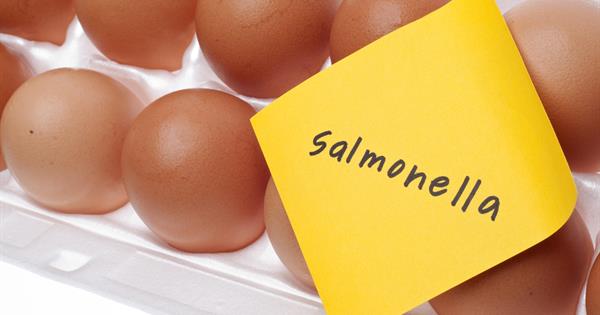Introduction
Egg is a common ingredient in various types of cuisines. It is important to exercise caution when it comes to the handling of eggs to prevent contamination by bacteria such as Salmonella.
What is Salmonella and how does it affect our health?
Salmonella is a type of bacteria and a leading cause of food-borne illnesses worldwide. It is naturally present in the intestines of animals and can be found on food such as raw meat, raw dairy products, poultry and eggs.
Salmonella can be spread to humans through the consumption of contaminated food and drinks. The bacteria can colonise the intestines to cause gastrointestinal illness such as salmonellosis, in affected individuals. The symptoms include diarrhoea, abdominal pain, fever, nausea and vomiting. While the infection typically subsides within a week in most people, Salmonella can cause serious infection in vulnerable population such as the elderly, young children and those with weakened immune systems.
How does Salmonella contamination occur in eggs?
Salmonella infections are often linked to the consumption of contaminated eggs. Generally, eggs can be contaminated with Salmonella in two ways.
The first way is via faecal contamination. As
Salmonella can often be found in the gut and faeces of chickens, the insides of the egg may be contaminated when bacteria in the faeces enter through pores on the shells, or when egg shells are cracked. The second way of egg contamination is exclusive to one particular type of
Salmonella known as
Salmonella Enteritidis (SE). In SE-infected layer hens, the bacteria can be found in their ovaries and they enter the eggs even before the shells are formed. Infected hens do not appear sick but will occasionally lay SE-contaminated eggs that can cause food-borne illnesses if the eggs are not handled or cooked properly.
How does SFA ensure that eggs in Singapore are safe to eat?
Singapore’s egg supply comes from both local and overseas farms.
Imported eggs must be from approved sources in accredited countries that meet SFA’s food safety and animal health standards. As part of our accreditation criteria and import conditions, farms need to be free from SE. Local egg farms are also required to have in place good farm management practices and strong biosecurity measures to prevent the risks of SE contamination. These include having a grading system to remove soiled and/or cracked eggs, and regularly testing their hens for SE to remove eggs of SE-infected flocks from sale. Both imported and local eggs are subject to our food safety surveillance programme, which includes inspection and testing. If SE is detected through our tests, the farm will be suspended until it rectifies the SE contamination issue.
How can we reduce the risk of food poisoning caused by Salmonella in eggs?
Consumers too, can play a part in protecting themselves. Salmonella can be present inside the egg, as well as on the egg shell. While we cannot tell if eggs are contaminated with Salmonella just by looking at it, we can take steps to reduce our risk of Salmonella infection from eggs:
- Purchase eggs from SFA- approved businesses (farms, importers, retailers) and ensure that the shells are clean, free from faecal contamination and not cracked.
- Cook the eggs thoroughly until both the yolks and whites are firm. Runny egg whites or yolks may still contain bacteria.
- Consider using pasteurised eggs for dishes that require raw or lightly cooked eggs as pasteurisation eliminates harmful bacteria through the use of heat treatment. These dishes include desserts such as tiramisu, and sauces and dressings such as hollandaise sauce.
- Eat eggs or dishes containing eggs as soon as possible after cooking. Refrigerate (below 4°C) food containing eggs promptly to avoid the growth of bacteria that may be present in the dish.
- Wash your hands thoroughly with soap before and after handling eggs to prevent the risk of cross-contamination.
- Use separate crockery and utensils for raw eggs and ready-to-eat/cooked food.

Photo credit: Freepik.com
About the Author
Herman Teo is a Senior Scientist from the Risk Assessment and Communications Department of the National Centre for Food Science. With a Masters in Food Science and Human Nutrition from the National University of Singapore, his recent work includes the regulatory framework for insects for food and feed, and examining emerging food processing risks.